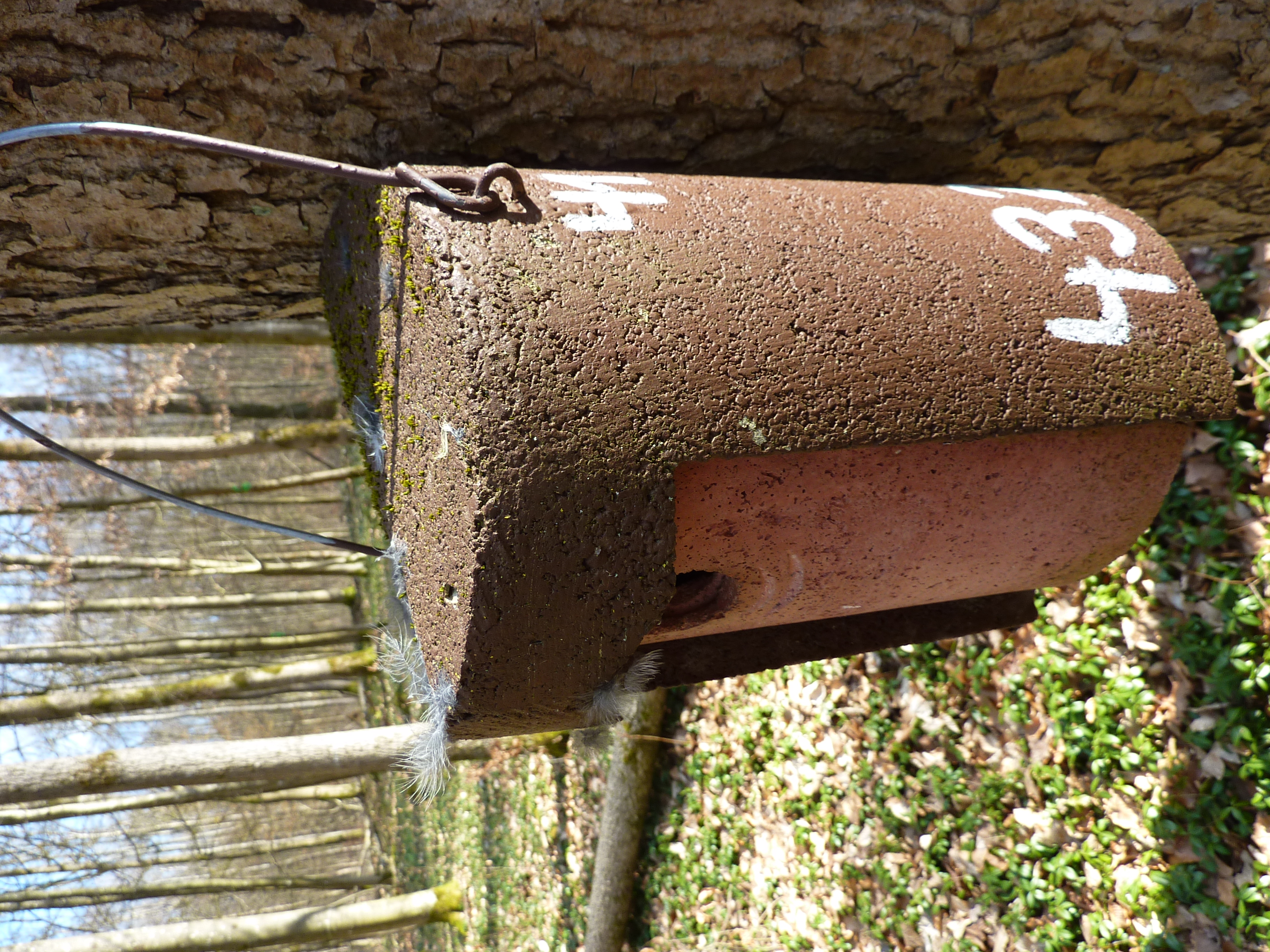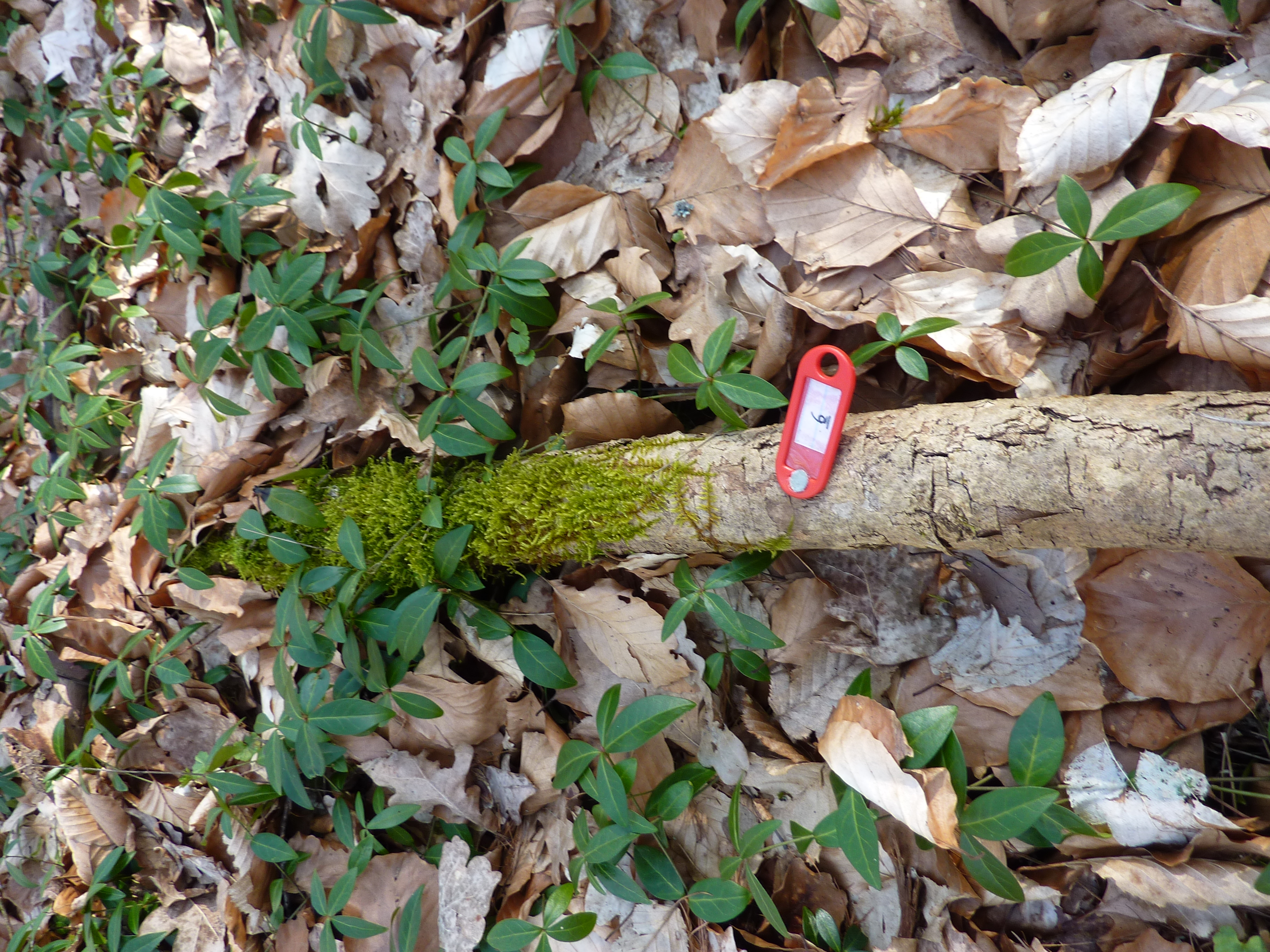
BETA-FOR SP9 placed nesting boxes for the monitoring of breeding birds. (Creator: Patrick Kacic)

Open canopy structures in the University forest of Würzburg, an aggregated BETA-FOR treatment. (Creator: Patrick Kacic)

BETA-FOR treatment in the Hunsrueck region consisting of standing (snags) and lying deadwood in an aggregated form. (Creator: Patrick Kacic)

The analysis of deadwood microbial diversity, both in lying and hanging deadwood structures, is the focus of BETA-FOR SP7. (Creator: Patrick Kacic)

The analysis of deadwood microbial diversity, both in lying and hanging deadwood structures, is the focus of BETA-FOR SP7. (Creator: Patrick Kacic)

Gap canopy structure created through an aggregated removal of trees in a BETA-FOR treatment at the Hunsrueck region. (Creator: Patrick Kacic)
Data sharing and publication policy
Agreed in BETA-FOR meeting 31.03.2023
The text is based on the “Data sharing and publication policy” of the Jena Experiment as well as that of the Biodiversity Exploratories and the Guidelines for Safeguarding Good Research Practice of the German Research Foundation.
1. Membership
- Members of the Research Unit are all Principal Investigators (PIs) of the associated current DFG subprojects. The membership ends one year after the end of the funding phase; however, the rules for data sharing and data publication defined in the Data sharing and publication policy remain obligatory.
- Other people can become a member upon request if they complement the activities of the Research Unit. The application requires a project proposal and the agreement on the Data sharing and publication policy. Applications to become a BETA-FOR (BF) member need to be approved by the assembly of the current PIs. The membership duration will be defined with the approval.
- DFG-funded employees, and employees of the members, that are involved in project- related work, namely postdocs, PhD students, students, technicians, or assistants are called BF participants. The status ends one year after the end of the funding phase; however, the rules for data sharing, and data publication defined in the Data sharing and publication policy remain obligatory. Applications to become a BF participant need to be supported by one member of the BF and are approved by the assembly of the current PIs.
- Alumni is any person that was a BF member or participant at some point in time, but no longer is part of the BF.
2. Data policy
The Research Unit BF represents a collaborative research effort to investigate the effects of biodiversity on ecosystem functioning. All participating subprojects use the same experimental forest plots for their measurements. The subprojects are linked through such joint activities, and close collaboration and fast data sharing is required for the success of each subproject and to achieve the underlying common goals. These specifics require agreement on the documentation, quality, sharing and publication of data obtained in the Research Unit. These agreements are subject of this policy and apply to all BF members and participants.
2.1 Definitions
In this policy, the following terms are used:
- (Primary) Data: All measurements and observations obtained in the context of BF research. This includes field observations, lab data, review data, processed (derived) and assembled data.
- Synthesis Datasets are datasets whose main content is produced by collecting, transforming, and integrating other primary data stemming from at least two datasets; for these, specific rules outlined in 2.5 apply.
- Rights Holders: Rights holders are the universities or research institutions for which the data are collected within a subproject. They are represented by the respective PI(s).
- Project Leader: Person(s) responsible for the dataset (on a long-term perspective), usually the PI(s) of the subproject. The project leader(s) has/have write permission on the dataset.
- Contact Person: The person managing and granting access to the dataset. In general, the contact person is a project leader or a person designated by the project leader(s) (most often the data creator). The contact person receives dataset access requests and controls the decision. The contact person is responsible to communicate to project leaders, data creators, and collectors where necessary. The contact person is the place to go for troubleshooting or questions related to the dataset. The contact person has write permission on the dataset.
- Metadata Creator: The person who created the dataset by filling out the first version of the metadata. The metadata creator has write permission on the dataset.
- Data Creator: Main researcher(s) involved in producing the primary data. The data creator has write permission.
- Data Collector: Person(s) responsible for gathering/collecting data under the guidelines of the data creator or project leader. The collector and creator can be the same person. The data collector has only view permission.
- Data Curator: Person who is responsible for the organization and integration of the project data collected in the various subprojects.
- Data Owner: Data owners are the data creator(s) and the project leader(s) of the dataset.
2.2 Dataset creation, upload and quality
- All data collected or produced within the framework of the BF will be deposited in a central database (BF data management platform). In case of large datasets, such as molecular datasets (e.g. microbial sequences, chemical compounds) and photo/video material, only integrated datasets (e.g. diversity indices, functional traits data) will be made available through the BF database with a link to the full data.
- Processed and quality-checked data has to be uploaded in accordance with the project leader(s) as soon as possible, but not later than one year after the data collection or data assembly event.
- Dataset creation and data upload have to follow the best practices provided by the data curator. In particular, metadata has to be written very carefully and should be as informative and comprehensive as possible. Primary data should be carefully quality checked.
- The data curator can determine a set of data quality criteria, which datasets should adhere to, and whether the submitted data are acceptable.
- Quality control of data is primarily the duty of the data creators. The ultimate responsibility for data quality lies with the PI(s).
2.3 Data access for members and participants
- Each member and participant of BF has free access to all metadata in the database.
- A member or participant who would like to use data, needs to send a request via the BF data management platform to the responsible contact person that states the planned usage of the data. This person is responsible to inform the data creators and project leader(s) and give them the option to object. As a rule, access should be granted. It can be denied, if the use of the data interferes with planned analyses by the data creators. Requests should be answered within 2 weeks. Afterwards the request is implicitly granted. Contact persons’ absence (e.g. indicated by automatic mail reply) is considered and extends the period of time.
- If access is granted, the contact person will be informed by the BF data management platform, and the form of the involvement of project leaders and data creators of the shared data (in particular their acknowledgement) has to be discussed.
- All requests and allowances sent via the BF data management platform will be copied to the data curator. Thus, all data sharing is moderated by the data curator.
- Data obtained in this way can only be used for the purpose indicated in the request. Any further usage requires a new dataset request.
- Data obtained in this way may not be given to third parties including other members and participants.
2.4 Public access to data in the BF data management platform
- By default, data will be made publicly available under CC BY-NC-SA. However, other licenses can be used too. Public datasets can be granted a DOI.
- To give data creators time to perform their analysis, by default, an embargo period of three years from the end of data collection/data assembly will be observed. During this time, the data will not be made publicly available. This period can be extended once for another two years. Further extensions are possible but need to be justified. Data creators can decide at any time to make datasets publicly available with the consent of the respective PI(s). They have to inform the data curator about this decision.
- Data that is used in a publication should be published prior or concurrent with the publication.
2.5 Rules for synthesis datasets
- For synthesis datasets, data owners include the PIs of the subprojects who assembled the dataset, as well as owners of all datasets which have contributed significantly to the content of the synthesis dataset. In case there are several data owners, a consensus has to be reached among them on one PI who will be the responsible data owner for the dataset. The responsible data owner has to ensure that other people associated with the data (in particular data collectors) are appropriately considered. The PI can delegate the tasks associated with data ownership to other BF members or participants.
- For synthesis datasets, data creators are all researchers of the synthesis team who created the new dataset.
- For synthesis datasets, the contact persons from all datasets contributing to the new datasets are the data collectors.
- Before requesting access to a synthesis dataset, a (synthesis) project proposal has to be written and circulated.
- Requests have to be done via the BF data management platform.
- Data creators decide under the guidance of the contact person on the request, considering the status of the datasets (embargoed or published data). Embargoed data need to be separately requested from the data collectors.
- Once all data collectors agree, the contact person grants the dataset access via the BF data management platform. If one or more dataset collector(s) disagree with the request, the data creators can exclude these single dataset(s).
- Before writing a collaborative paper, the credit to the data suppliers is discussed.
3. Publication policy
It is imperative for the BF that results obtained will be published quickly, i.e. within a couple of years after its creation. The careers of the PhD-students, postdocs, and PIs as well as the chances of continued funding depend on rapid publication. The planning of an experiment, the planning and executing of data collection, the analysis of the data, and the writing of a manuscript all present necessary steps in producing a paper that principally merit authorship. Due to the fact that the Research Unit is a joint research effort, many papers will therefore have several authors. This is not a disadvantage, as lists of publications are longer nowadays than they used to be. As long as the people mostly responsible in the derivation of a particular result are acknowledged by first authorship (normally the PhD students/postdocs), longer lists of authors should not be a problem. To avoid uncertainties about access to data or authorship, the BF agrees on the following publication policy.
3.1 General publication rules
- The BF Research Unit adheres to the DFG code on good research practice.
- Any BF member or participant that plans to publish a paper should send an email to the Publication Coordinator who will distribute it immediately via the internal mailing list (beta4@lists.uni-wuerzburg.de). The Publication Coordinator must be elected at a general meeting of the Research Unit.
- BF members and participants planning to submit a paper to a journal are requested to send the final version of the manuscript including a list of the datasets used a minimum of 2 weeks before planned submission to the Publication Coordinator who will distribute it immediately via the internal mailing list. This facilitates transparency across all other members and participants regarding ongoing activities and allows final improvement of synthesis work.
- Once a publication has been accepted, citation information and a copy of the final paper has to be sent to the Publication Coordinator, who will include information about the publication in the publication list.
3.2 Authorship rules
Following the Authorship definition recommended by the German Research Foundation², an author is “an individual who has made a genuine, identifiable contribution to the content of a research publication of text, data or software”.
- Authors should have contributed in a research-relevant way. That includes (1) the development and conceptual design of the research project, or (2) the gathering, collection, acquisition or provision of data, software or sources, or (3) the analysis/evaluation or interpretation of data, sources and conclusions drawn from them, or (4) the drafting of the manuscript. Additionally, all authors have to contribute to paper writing.
- The lead author is responsible for ensuring that everyone is taken into account, who contributed to the paper project.
- If a contribution is not sufficient to justify authorship, the individual’s support may be properly acknowledged in an acknowledgement.
- Honorary authorship where no such contribution was made is not permissible.
- A leadership or supervisory function does not itself constitute co-authorship.
- The Data use and publication board decides in cases of disagreement (see below).
- Final approval of and accountability of all (co-)authors for the manuscript is mandatory.
3.3 Acknowledgements
- The central coordination and the data-management team should be acknowledged (if they are not co-authors).
- Further, all funding agencies and institutions must be named.
- We recommend a text, that is covering the following content (need to be updated in case of change in staff):
We thank the technical staff [[…]] for their work in maintaining the field site and also many student helpers for their support on the experimental plots. Further, we thank the speaker Jörg Müller, the central coordination team [[…]], and the data management team led by [[…]]. BETA-FOR is funded by the Deutsche Forschungsgemeinschaft (DFG, German Research Foundation, FOR 5375) - 459717468, with additional support by the Julius-Maximilians-Universität Würzburg (JMU).
4. Data use and publication board
The Steering Committee will form a Data use and publication board that makes decisions in case of disagreements about the use of data and authorship. The board can be called upon by any member and participant of the Research Unit.
|






